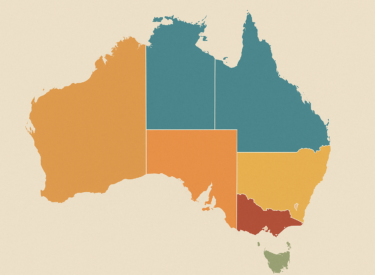Are Australian mortgage holders finally catching a break?
New data from Roy Morgan hints at a turning point in the battle against mortgage stress.
In October 2024, the proportion of Australian mortgage holders identified as ‘At Risk’ of mortgage stress dropped to 28.3%.

This marks the third consecutive monthly decline and represents a 1.2 percentage point fall from September and a notable 2% decrease since June 2024.
Just to make things clear... these mortgage holders are not in default, the default rate for mortgages is currently very low, but when the amount of household income required to pay a mortgage is above 30% or so, the situation is called "mortgage stress."
The RBA chart below shows that despite the sharp rise in interest rates over the last few years, home loan arrears remain at post-GFC lows, defying those property pessimists who forecast that significant levels of mortgage stress would lead to forced sales by homeowners who got over their heads in debt.

What’s driving the decline in mortgage stress?
There are a few key factors contributing to this trend:
- Rising household incomes:
The Stage 3 tax cuts introduced earlier this year are starting to deliver benefits, leaving many households with more disposable income to manage their financial obligations.
These cuts have been particularly impactful for middle-to-high-income earners, many of whom carry large mortgages. - Stable interest rates:
The Reserve Bank of Australia (RBA) has maintained the cash rate at 4.35% since August.
After 12 rate hikes since May 2022, this extended pause has provided breathing space for borrowers, especially those on variable rates. - Strong employment market:
Australia’s labour market remains resilient, with unemployment rates hovering near record lows. Secure employment and steady wages are critical for borrowers to stay on top of their repayments.
A cautious optimism – the long road to recovery
While the decline in mortgage stress is encouraging, it’s important to put this into context.
Not surprisingly the current 28.3% of mortgage holders classified as ‘At Risk’ is still significantly higher than the levels seen in May 2022, before the RBA began its rate-hiking cycle.
Back then, only 21.9% of borrowers were considered ‘At Risk.’
Additionally, the official cash rate has been at its highest since back in December 2011.
Many borrowers who fixed their mortgages during the ultra-low interest rate period of 2020-2021 are now rolling off to much higher variable rates.
For these households, the shock of higher repayments could still push them into financial distress in the months ahead.
Roy Morgan also highlights a related concern: over 1.5 million Australian households, or around 39.1% of all mortgage holders, remain ‘At Risk’ under their more lenient baseline classification.
This underscores the fragility of household budgets and the delicate balance many Australians are navigating.
What’s next for mortgage holders?
Looking ahead, the trajectory of mortgage stress will hinge on several factors.
The Australian Bureau of Statistics is set to release the September Quarter Inflation figure soon, which will inform the RBA's decisions in its final meetings of the year.
Should inflation continue to decline, it could pave the way for potential interest rate cuts in 2025, offering further respite to mortgage holders.
While the recent data provides a measure of optimism, mortgage holders must remain vigilant.
Economic conditions can shift rapidly, and staying informed and prepared is key to navigating the ever-evolving financial landscape.














